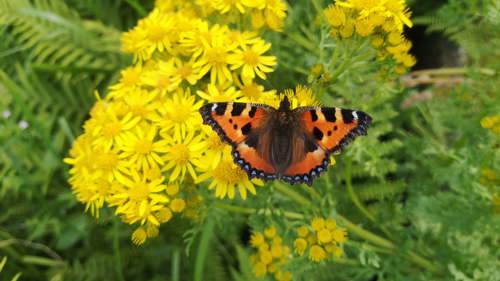Glasgow Museums Biological Records Centre

Glasgow Museums Biological Records Centre collects, validates and manages wildlife data. We hold over 1 million biological records. This data informs environmental decision making at all levels, from research and planning applications to national and local wildlife conservation. It is used by businesses, local authorities, recording groups, and the public.
We are a member of the Association of Local Environmental Records Centres.
Where do we cover?
- Glasgow
- Renfrewshire
- East Renfrewshire
- Inverclyde
- East Dunbartonshire
- West Dunbartonshire
- South Lanarkshire
- North Lanarkshire
- parts of Argyll & Bute (VC99 and Bute)
Sharing biological records
All biological records are valuable. They help us understand species distribution and wildlife health.
Send us your biological records
- We have two recording forms: a word document and an excel document. The word document is best if you are sending us one or two records. The excel document is best when sending in a lot of records.
- Please email completed documents to biological.records@glasgowlife.org.uk.
- It is helpful if you include a photograph of what you saw. This helps us to confirm the species.
- Our privacy notice for biological records is available online.
Recording wildlife online or using an app
- There are several online systems for wildlife recording.
- We recommend iRecord, managed by The Biological Records Centre, it is free to use as a phone app or in a web browser.
Requesting wildlife data
We are currently closed for data requests and apologise for any problems this causes.
This closure is to allow us to evaluate the Centre’s operations, resources and structure. We have invited the Association of Local Environmental Records Centres to help produce a development plan for the Centre. During this process we will engage stakeholders from across the Clyde area and to ensure the plan for GMBRC’s future is robust and forward thinking.
Biological records are vital for wildlife conservation, scientific research and planning applications. We are committed to providing a sustainable future for the data held within the Centre.
Relevant publications
Glasgow Museums Biological Records Centre: achievements over the past 25 years and future prospects. R.B. Weddle & R.S. Haggard in The Glasgow Naturalist 28(2), 2024.
Wildlife Around Glasgow: 50 Remarkable Sites to Explore. R. Sutcliffe, 2010.
The "Clyde Cards": an account of biological recording in the west of Scotland. R.B. Weddle in The Glasgow Naturalist 23(6), 2001.


